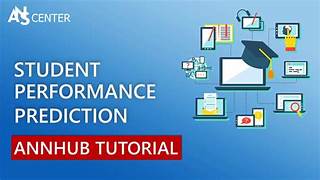Predicting Student Performance through AI Analytics
In the evolving landscape of education, technology has steadily transformed traditional methods of teaching and learning. One of the most revolutionary advancements in recent years is the integration of Artificial Intelligence (AI) in predictive analytics. AI-powered systems are now being utilized to predict student performance with unprecedented accuracy, offering educators and institutions valuable insights into students’ needs, behaviors, and potential outcomes. This article delves into the mechanisms, benefits, challenges, and ethical considerations of employing AI to predict student performance.
The Mechanics of AI Analytics in Education
AI predictive analytics involves analyzing large datasets to identify patterns and correlations that might be invisible to human observers. In education, these datasets can include a wide array of variables such as:
- Academic records (grades, test scores, attendance).
- Behavioral data (class participation, engagement in online platforms).
- Demographic information (age, socioeconomic status, location).
- Psychometric assessments (learning styles, motivation levels).
AI algorithms, particularly those leveraging machine learning (ML), process these data points to predict outcomes like:
- Academic Success: Forecasting grades, test performance, and course completion rates.
- At-Risk Students: Identifying students likely to struggle or drop out.
- Subject Proficiency: Pinpointing strengths and weaknesses in specific subject areas.
- Long-Term Outcomes: Estimating career readiness or success in higher education.
Machine learning models such as neural networks, decision trees, and support vector machines (SVM) are commonly used for these purposes. By iteratively refining their algorithms, these models can improve prediction accuracy over time.
Benefits of Predicting Student Performance
The application of AI in predicting student performance brings a host of advantages for educators, students, and institutions alike:
1. Personalized Learning Paths
AI analytics can identify the unique learning needs of each student. For example, if a student struggles with a particular topic in mathematics, AI systems can recommend additional resources, exercises, or tutoring sessions tailored to that specific area. This customization helps maximize the student’s potential.
2. Early Intervention
One of the most significant benefits of predictive analytics is its ability to flag at-risk students early. For instance, a decline in attendance or participation might signal disengagement. Educators can use this information to intervene proactively, offering support before the problem escalates.
3. Data-Driven Decision Making
Educational institutions can use AI insights to make informed decisions about curriculum design, resource allocation, and teacher training. For example, identifying common areas where students struggle can lead to curriculum adjustments or enhanced teacher workshops.
4. Improved Outcomes
By addressing individual and group challenges more effectively, AI analytics contribute to higher student achievement levels, reduced dropout rates, and better preparation for future educational or career paths.
5. Scalability
AI systems can process and analyze data for thousands of students simultaneously, making them ideal for large educational institutions or online learning platforms.
Case Studies of AI Predictive Analytics in Action
1. Arizona State University
Arizona State University uses AI-driven platforms like Civitas Learning to predict student success. By analyzing attendance, grades, and course engagement, the university has improved retention rates and provided targeted support to students.
2. Khan Academy
Khan Academy leverages AI to offer personalized recommendations for students. By analyzing user interaction data, the platform predicts performance and suggests exercises to strengthen weak areas.
3. EdTech Companies
EdTech companies like Coursera and Udemy use AI analytics to recommend courses based on user performance and engagement history, enhancing the learning experience.
Challenges in AI-Driven Student Performance Prediction
While the benefits are compelling, implementing AI analytics in education is not without its challenges:
1. Data Privacy and Security
Educational data often includes sensitive information. Ensuring this data is stored and processed securely is paramount to protect student privacy and comply with regulations like FERPA or GDPR.
2. Bias in Algorithms
AI systems are only as unbiased as the data they are trained on. If historical data reflects systemic inequalities, the AI may inadvertently perpetuate or amplify these biases. For example, students from underrepresented communities may be unfairly flagged as at-risk due to socioeconomic factors.
3. Resistance to Adoption
Educators and institutions may resist adopting AI technologies due to a lack of understanding, fear of job displacement, or skepticism about the accuracy and utility of AI predictions.
4. Over-Reliance on Data
While data-driven insights are valuable, they should not replace human judgment. Over-reliance on AI predictions might lead to neglecting other qualitative factors, such as a student’s creativity, determination, or unique circumstances.
5. Cost of Implementation
Developing and maintaining AI systems requires significant financial investment, which may be prohibitive for smaller institutions or those in low-resource settings.
Ethical Considerations in Predictive Analytics
The ethical use of AI in predicting student performance involves several critical considerations:
1. Transparency
Students, parents, and educators must understand how AI systems work, what data is being used, and how predictions are made. Lack of transparency can erode trust in these systems.
2. Consent
Students and their families should have the right to opt out of data collection or predictive analysis, particularly if they feel it may harm their opportunities or misrepresent their abilities.
3. Accountability
Institutions must establish clear accountability frameworks to address errors or biases in AI predictions. This includes defining who is responsible for overseeing and correcting these issues.
4. Avoiding Labeling
Predictions about a student’s potential should never become a self-fulfilling prophecy. Labeling a student as “at-risk” might lower their confidence or influence educators’ perceptions, impacting their treatment.
The Future of AI in Student Performance Prediction
As AI technologies continue to evolve, their applications in education are expected to become more sophisticated and widespread. Innovations on the horizon include:
- Real-Time Feedback Systems AI systems could provide immediate feedback during lessons, enabling students to adjust their learning strategies dynamically.
- Integration with Wearables Wearable devices could monitor students’ stress levels, attention spans, and other physiological indicators, enriching the dataset for performance predictions.
- Collaborative AI Systems Future systems may involve collaboration between multiple AI models to offer a more holistic analysis of student performance, incorporating both academic and non-academic factors.
- Global Standardization International collaboration could lead to standardized frameworks for AI in education, ensuring ethical practices and interoperability across borders.
Conclusion
AI-powered predictive analytics is reshaping the educational landscape by offering powerful tools to understand and enhance student performance. By identifying patterns and predicting outcomes, these systems empower educators to deliver personalized support, improve institutional decision-making, and foster student success. However, to unlock the full potential of this technology, it is crucial to address the associated challenges and ethical concerns thoughtfully. With responsible implementation and ongoing refinement, AI can play a transformative role in building a more equitable, efficient, and impactful education system.


